The Samsung Galaxy Note 4 Review
by Joshua Ho on October 15, 2014 9:00 AM EST- Posted in
- Smartphones
- Samsung
- Android
- Mobile
- Galaxy Note 4
GPU Performance
While CPU benchmarks are currently a bit poor in nature, our GPU benchmarks are definitely more helpful when comparing between devices and across platforms. In the case of the Galaxy Note 4 with a Snapdragon 805 we see the same Adreno 420 GPU clocked at 600 MHz that is also used in the Galaxy S5 LTE-A so performance should be relatively similar.
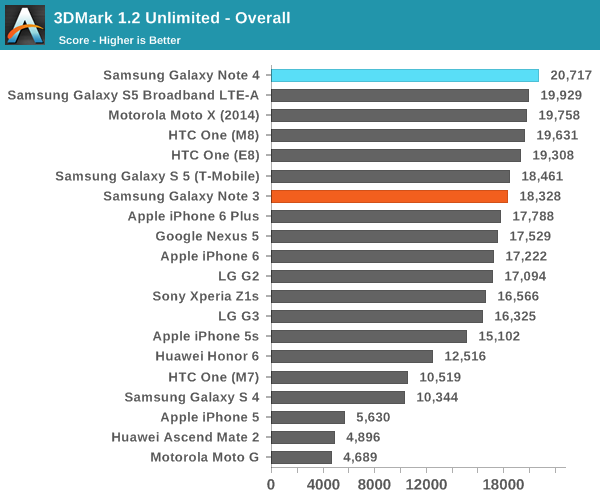
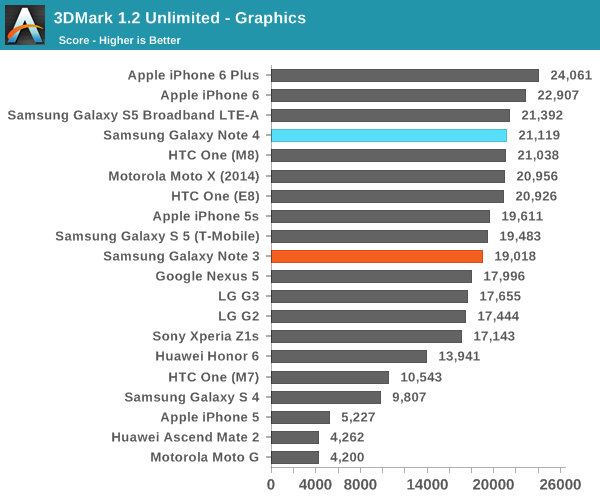

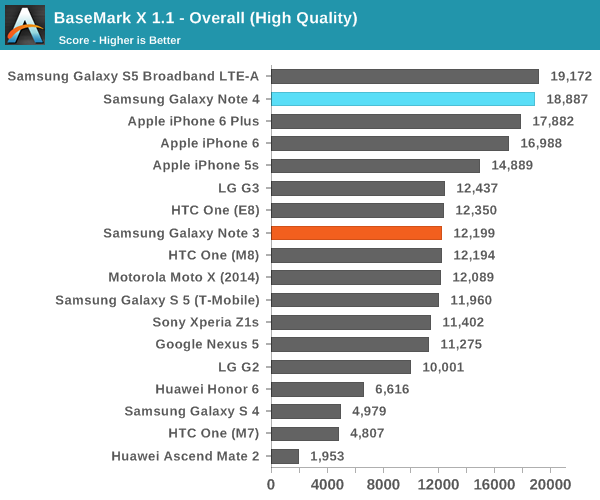
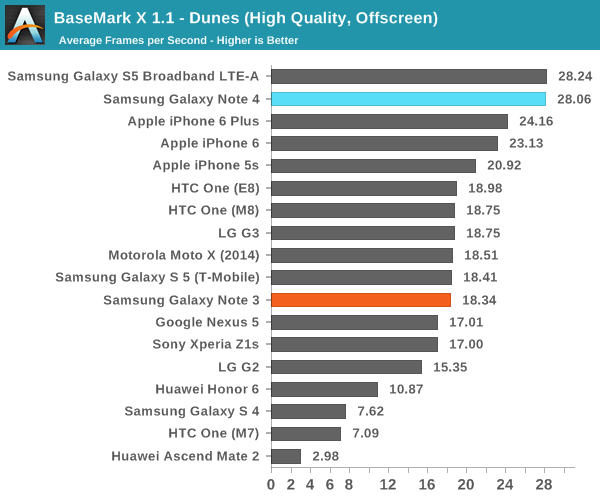

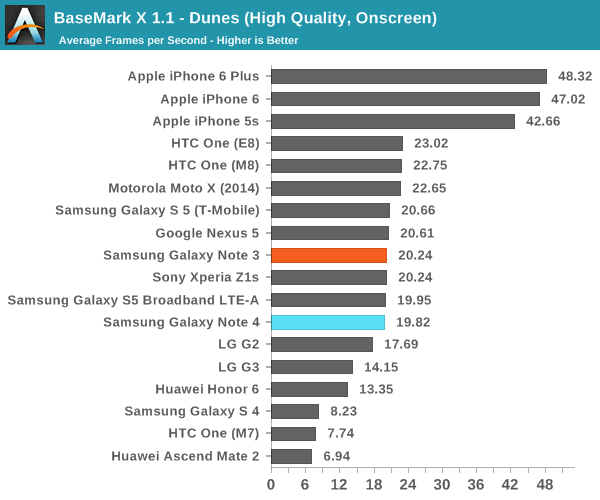

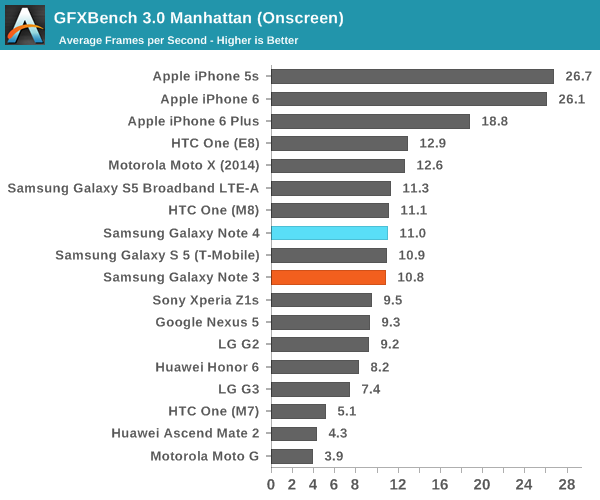
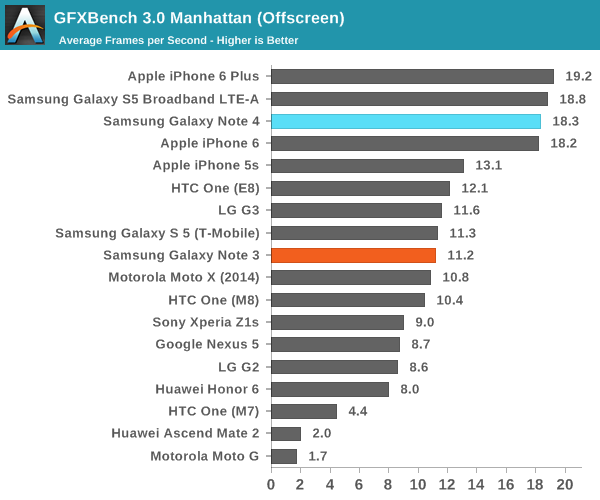
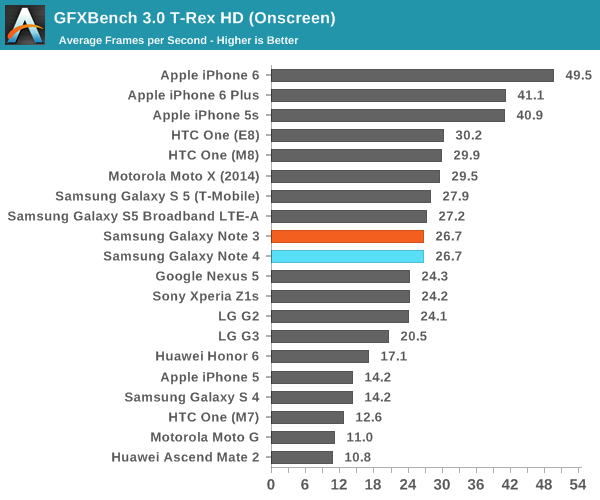
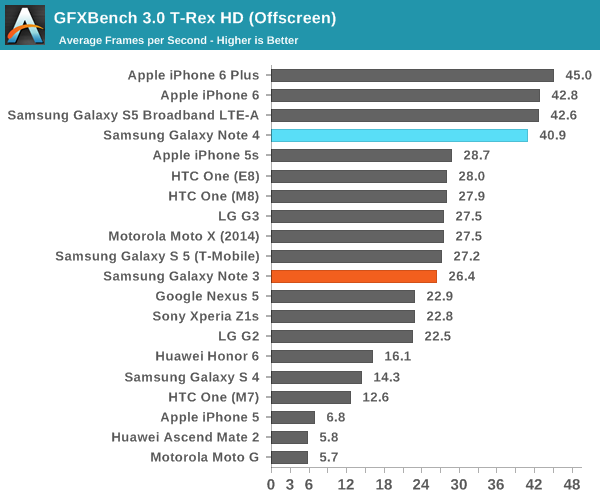
Once again, the Galaxy Note 4's GPU performance line up quite closely with what we expect from the Adreno 420. However, due to the higher 1440p resolution the performance improvements from the Adreno 420 are relatively small or none at all unless the application renders at 1080p.
NAND Performance
While NAND performance is generally an area where it's important to avoid dipping too low, there's are some cases that seem to improve in responsiveness with faster NAND, such as updating apps in the background while doing other tasks or similar cases where data committed to NAND becomes relatively random. In order to test this we use Androbench with some custom settings.


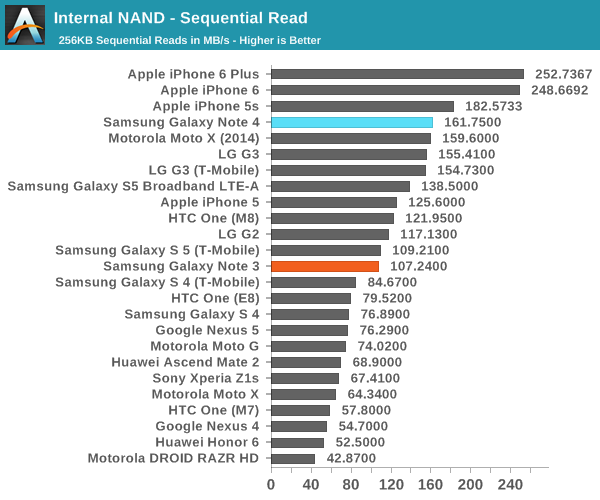
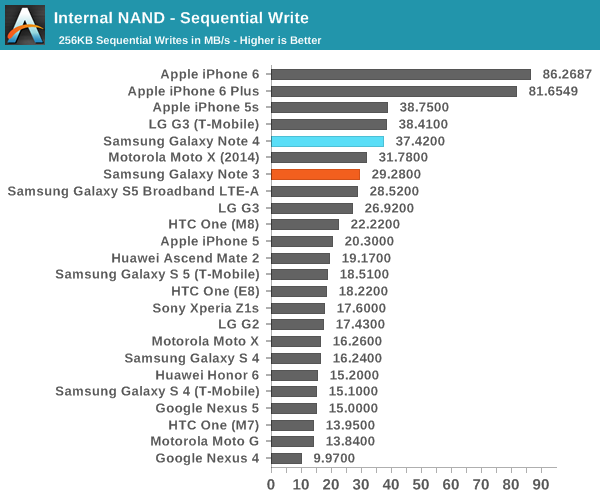
As one can see in the test results, Samsung continues to stay near the front of the pack when it comes to NAND performance. One shouldn't expect storage performance to become a bottleneck on this device.










195 Comments
View All Comments
dakishimesan - Wednesday, October 15, 2014 - link
You can't ignore maximum brightness. OLED screens have a high contrast ratio because their black levels are very deep, which offsets the lower brightness to still give it a high ratio. But maximum brightness still matters for visibility outside.theduckofdeath - Wednesday, October 15, 2014 - link
You can however dismiss its importance. If the dynamic range is below the thousands on one tech and maybe above the millions on the other tech, other numbers suddenly become really, really irrelevant.JoshHo - Monday, October 27, 2014 - link
This is technically inaccurate. Outdoor visibility is primarily determined by maximum brightness and diffuse reflectance, not native contrast.jnb - Wednesday, October 15, 2014 - link
I played around with an iPhone 6 Plus and the Note 4 at Best Buy the other day. I thought there was a big difference in the display with the Note 4 being much better. It is interesting to see a review like this say there are basically equal. It goes to show that you should really look at them in person and form your own opinion. These numbers don't mean anything to an average person.melgross - Wednesday, October 15, 2014 - link
That's very misleading. While the blacks are just a small bit better than the best LCD displays, the whites are half as bright. In normal lighting, the much dimmer AMOLED displays will look fine, but outside, in direct sunlight, they will be washed out.The GS5 is definitely not more readable outside. So just go ahead and ignore reality. Brightness is directly responsible for readability outside. It's not magic.
Tams80 - Thursday, October 16, 2014 - link
It's not just brightness. I don't know what Samsung have done here, but Nokia CBD (proper CBD) increased sunlight readability without just increasing screen brightness.theduckofdeath - Thursday, October 16, 2014 - link
It's not "a small bit better", it's a much bigger difference than what you get between TN and IPS. 100's times bigger in fact.skinygeek - Wednesday, October 15, 2014 - link
Wondering how the Battery life of Exynos Variant would be . The 20nm Tech should give it an edge.danstek - Wednesday, October 15, 2014 - link
Is the graph comparing camera focus latency missing? Not showing up for me.juicytuna - Sunday, October 19, 2014 - link
It's there now, but unfortunately too late as most of the sites readership will miss out on knowing how awesomely fast the camera is.A stark contrast with the iPhone 6 review where the phase detect autofocus was put on pedestal and showered with confetti.